Cutting Back Deciduous Grasses in Late Winter or Early Spring
Cutting back deciduous grasses is one of a number of useful gardening tasks you can undertake in the first few weeks of the year, that will help keep the plants healthy and looking their best for spring. Deciduous grasses are grasses that lose their leaves in the winter, and they often need to be cut back to encourage new growth in the spring. Here are some tips for cutting back deciduous grasses:
Below we look at the basic time as part of the garden calendar, reasons, and methods for cutting back deciduous grasses in the first few weeks of the year. We will then go into more detail about the best ways to cut back the grass, why various species of deciduous grass require different treatments, and explain the differences between new and old growth and trimming for ornamental effect rather than maintenance.
The Basics
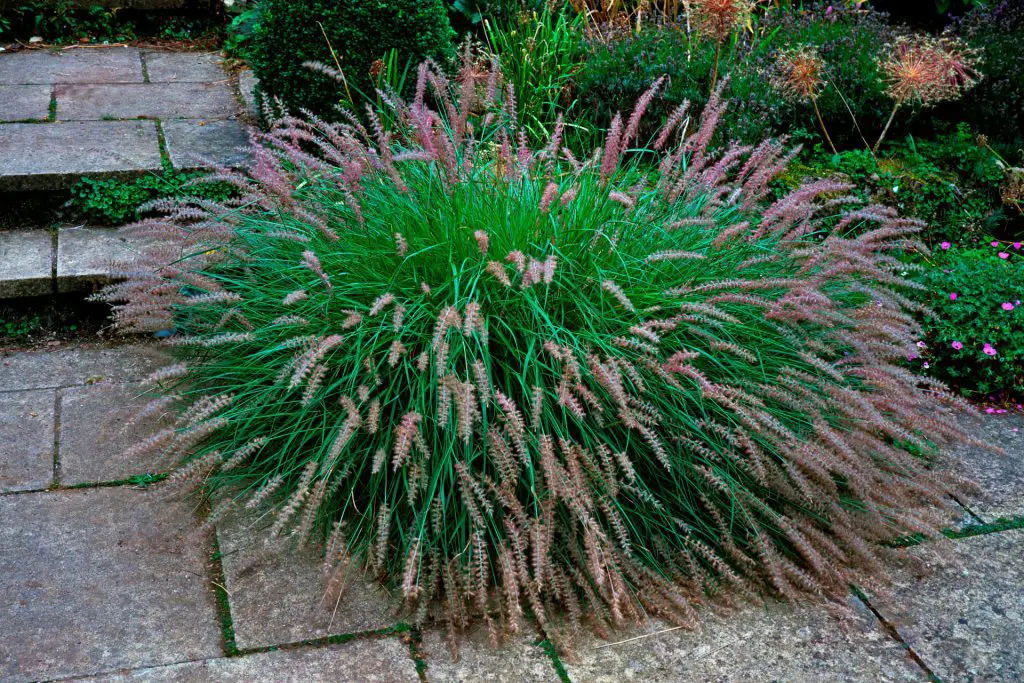
- Wait until late winter or early spring: It’s best to cut back deciduous grasses until late winter or early spring, as this is when the plants are starting to awaken from their winter dormancy.
- Cut the grasses back to just above new growth: When cutting back the grasses, make sure to cut them back to just above the new growth. This will help encourage the plants to produce new shoots and leaves and will also help keep the grasses looking neat and tidy.
- Use sharp, clean tools: Make sure you use sharp, clean tools when cutting back the grasses. This will help ensure that you get a clean cut and will help prevent the spread of diseases.
- Dispose of the clippings properly: After cutting back the grasses, dispose of the clippings properly. You can either compost the clippings or add them to your green waste bin.
The Benefits of Cutting Back Deciduous Grasses in Late Winter or Early Spring:
For several reasons, deciduous grasses benefit from being cut back in late winter or early spring. One of the main benefits is that it helps to remove any damaged or diseased foliage that may have accumulated over the winter months. This can help prevent the spread of diseases and pests and allow the grasses to put their energy into producing new, healthy growth. Additionally, cutting back the grasses in late winter or early spring can help to encourage new shoots and leaves to emerge, which can help improve the plants’ overall appearance and health.
How to Cut Back the Grasses,
To cut back deciduous grasses, you will need a pair of clean, sharp shears or scissors. Make sure that the blades of the shears are oiled and well-maintained, as this will help to ensure a clean cut. Remove any dead, damaged, or diseased foliage when cutting back the grass, and trim the grass to just above the new growth.
Be sure to make the cuts at a 45-degree angle, as this will help to prevent water from accumulating on the cut surfaces and potentially causing rot. Avoid cutting too close to the ground, as this can leave the grasses vulnerable to pests and diseases.
Safety Considerations to Keep in Mind While Cutting Back the Grasses:
When cutting back deciduous grasses, you should take certain precautions to ensure safety. First and foremost, always use sharp, clean tools to prevent accidental cuts or injuries. Wear gloves to protect your hands from sharp grass blades, and wear protective eyewear if you are working with grasses with seeds or other potentially irritating particles. Additionally, be mindful of your surroundings and be aware of any power lines, utility pipes, or other hazards that may be present.
Other types of Maintenance or Care that Deciduous Grasses May Require:
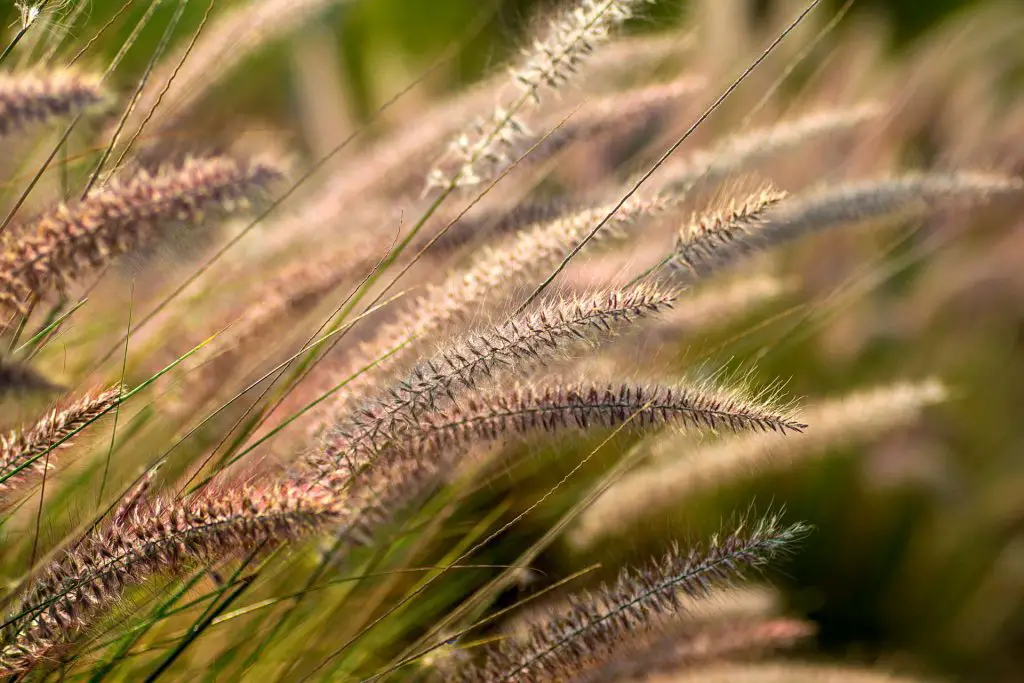
In addition to cutting back deciduous grasses in late winter or early spring, there are several other types of maintenance and care that these plants may require. One consideration is fertilization, as deciduous grasses typically need to be fertilized in the spring or early summer to promote new growth.
Choose a fertilization product explicitly formulated for grasses, and follow the manufacturer’s instructions for application. Deciduous grasses must also be watered regularly, especially during drought or hot, dry weather. Be sure to provide the grasses with enough water to keep the soil moist, but avoid over-watering, as this can lead to root rot.
Understanding Deciduous Grass Species
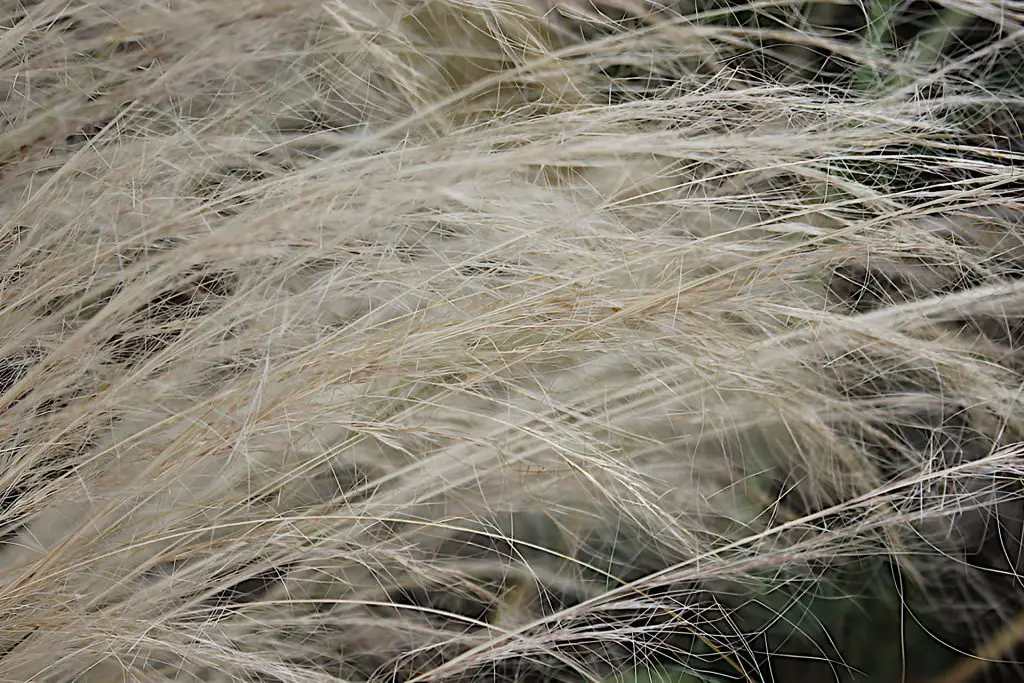
Introduction to Grass Species Diversity
Welcome to the aesthetically rich world of deciduous grasses, where each species whispers its own tale through the rustling leaves. Understanding the myriad of species is akin to deciphering these whispers, enabling you to nurture them with precision and care. The diversity among grass species is not merely in their aesthetic appeal but extends to their unique care requirements, particularly when it comes to cutting back.
Species-Specific Pruning Techniques
When you commit to pruning, it’s pivotal to recognize that each grass species has its own set of rules. For instance, the cool-season grasses might merely require a gentle trim, preserving two-thirds of their length, while warm-season grasses often demand a more assertive approach, being cut nearly to ground level.
Table 1: Pruning Techniques for Various Grass Species
| Grass Species | Pruning Length | Optimal Pruning Season |
|---|---|---|
| Cool-Season | Preserve 2/3 | Early Spring |
| Warm-Season | Near Ground Level | Late Winter |
Adapting Approaches for Optimal Health
Your deciduous grasses will flaunt their vitality when your pruning techniques align with their intrinsic needs. The new growth, often emerging in early spring, provides a beacon of when to wield your shears. For species like the Feather Reed Grass, a light trim just above the new shoots suffices. Conversely, Fountain Grass prefers a bolder cut, encouraging robust new growth.
- Tip: Always ensure your shears are sharp and clean to promote healthy cutting back and prevent disease transmission among plants.
Practical Insights
In the realm of deciduous grasses, theory, and practice weave together to form the tapestry of successful gardening. Let’s delve into a story from the meadows: Imagine a Miscanthus, its tall, arching blades dancing in the winter wind. While it offers a splendid visual, cutting back in late winter, just before the onset of spring, ensures it returns with vigor and vitality in the warmer months.
- Note: Observing the grass and identifying the point where new growth begins is crucial. Cutting back should ideally be done just above this point to safeguard the young shoots.
Care Requirements for Specific Deciduous Grasses Species
As we have noted, not all deciduous grasses are the same, and different types of grasses may require additional care and maintenance. Some common types of deciduous grasses include:
- Pampas grass (Cortaderia selloana)
- Maiden grass (Miscanthus Sinensis)
- Switchgrass (Panicum virgatum)
- Reed grass (Calamagrostis acutiflora)
Each of these grasses has unique characteristics and requirements. You should research the specific type of grass you are growing to provide the proper care. For example, some deciduous grasses may need to be fertilized more frequently than others or require different watering levels.
How to Identify and Distinguish It from Old-Growth:
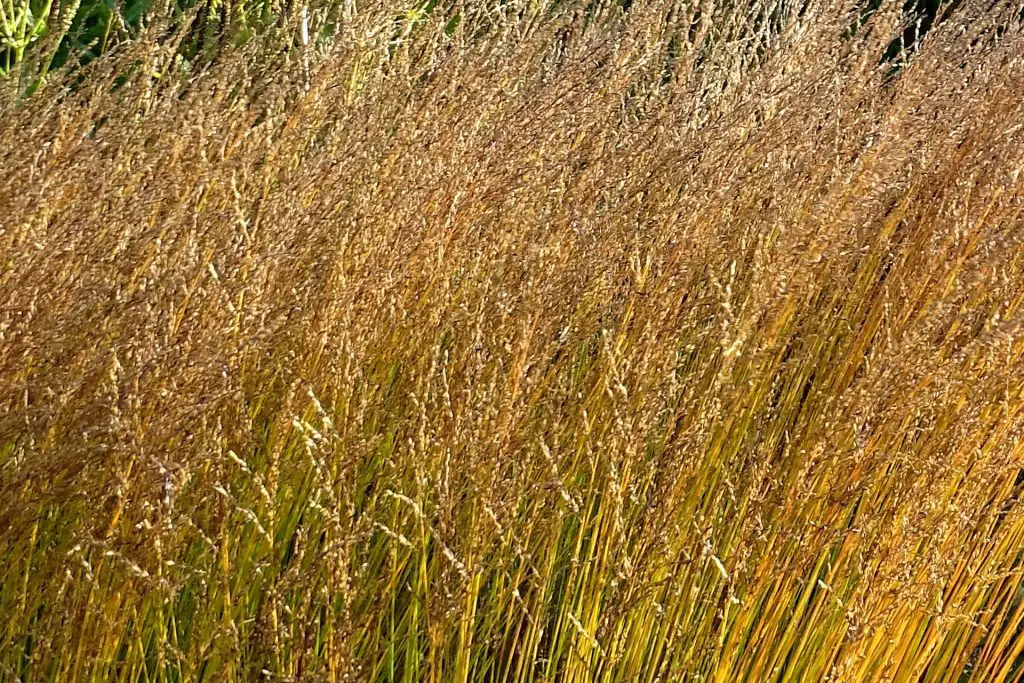
Deciduous grasses may exhibit several new growth types in late winter or early spring. Some common types of new growth include:
- Emerging shoots are the first signs of new growth appearing on deciduous grasses in the spring. Emerging shoots are usually green and tender and may be accompanied by small, pointed leaves.
- New leaves: As the grasses grow, fresh leaves will begin to emerge from the emerging shoots. These leaves will be larger and more mature than the initial emerging shoots and will typically be a brighter green color.
- Flowering stalks: Some deciduous grasses, such as pampas grass, produce large, showy flowers on tall stalks. These stalks are a type of new growth and will typically emerge from the center of the plant in the spring.
To distinguish new growth from old growth on deciduous grasses, look for the following characteristics:
- Color: New growth is typically a brighter, fresher green than old growth.
- Texture: New growth is usually softer and more tender than old growth, which may be more woody or fibrous.
- Location: New growth typically emerges from the base of the plant, whereas old growth may be higher up on the plant.
How to Determine the Appropriate Length to Cut Back the Grasses To:
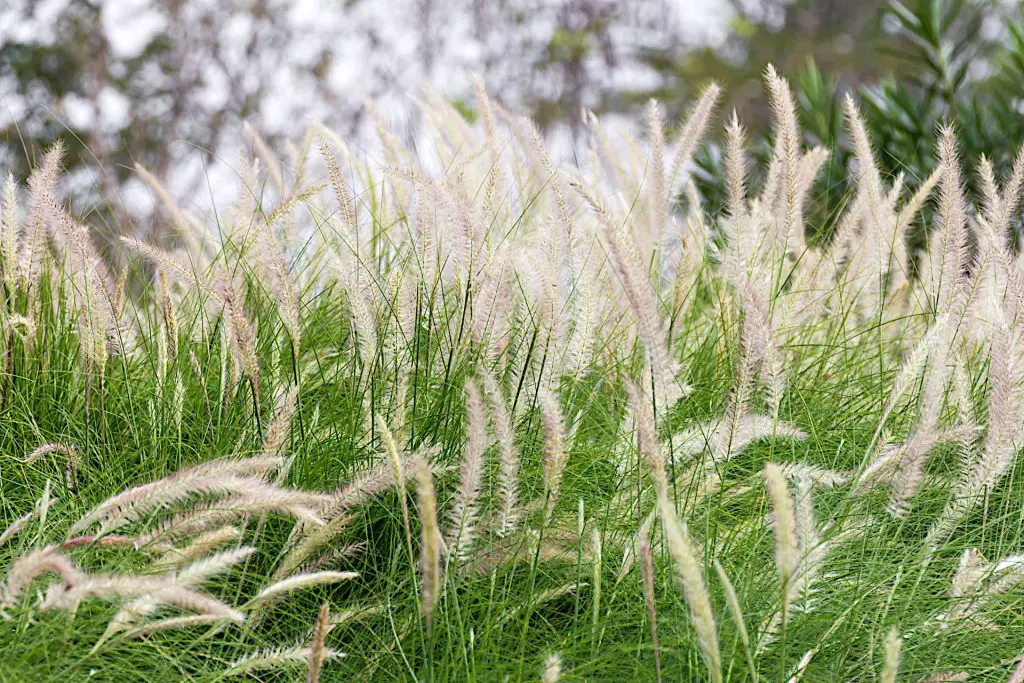
Balancing Aesthetics and Health
The Dilemma of Aesthetics vs. Health
There are trade-offs when caring for deciduous grasses, particularly when considerations regarding maintaining a winter spectacle or ensuring the sprouting new growth is unencumbered need to be taken. The aesthetic appeal of grasses, with their frosted seed heads and amber-hued foliage in winter, often tugs at the heartstrings of gardeners. Yet, beneath the surface, the vitality of the grass is quietly scripting its next act, ready to burst forth in spring.
Maintaining Aesthetic Appeal During Winter
Winter brings with it a stark beauty, where every blade of grass etches its silhouette against the crisp air. Deciduous grasses, such as the Northwind Switchgrass, stand tall, their golden strands weaving a tapestry against the snow. To maintain this visual charm:
- Preserve the Structure: Allow the grasses to stand tall, providing visual interest and a haven for wildlife.
- Strategic Pruning: For grasses that may become unkempt, a light prune can maintain form without sacrificing aesthetics.
Table 1: Winter Aesthetics of Various Grass Species
| Grass Species | Winter Color | Seed Head Presence |
|---|---|---|
| Northwind Switchgrass | Golden | Yes |
| Feather Reed Grass | Amber | Yes |
| Japanese Silver Grass | Straw-colored | Yes |
Ensuring Healthy New Growth in Spring
As the long days of winter recede, the new growth of your deciduous grasses timidly peeks through the soil, signaling a shift in your gardening approach. The cutting-back process now takes center stage, ensuring that the new growth is unimpeded by the dry, old foliage.
- Identify New Shoots: Look for fresh, green shoots emerging at the base.
- Prune Above the Growth: Ensure that the cutting back is done just above the new growth to prevent damage.
Striking the Right Balance
Within the ecology of gardening, aesthetic appeal, and plant health should join in harmonious melody. Striking the right balance involves a keen understanding of the deciduous grass species in your care and a willingness to adapt your practices to their needs.
- Seasonal Observations: Keep a journal of how your grasses evolve across seasons, noting any patterns or shifts in their appearance and growth.
- Flexible Pruning: Be willing to adjust your pruning techniques based on the health and aesthetic needs of your grasses.
The appropriate length to cut back deciduous grasses will depend on many factors, including the specific type of grass, the desired appearance, and the growing conditions. In general, it is best to cut the grasses back to just above new growth, as this will help to encourage new shoots and leaves to emerge.
However, the exact length will vary depending on the grass and the desired appearance. For example, if you want a more formal or manicured look, you may need to cut the grass back more aggressively. On the other hand, if you want a more natural or wild appearance, leave the grasses longer. It is always a good idea to research the specific type of grass you are growing to determine the appropriate length for cutting.
How to Prune or Shape Deciduous Grasses
As well as cutting back deciduous grasses for essential maintenance, you can also prune or shape the grasses for ornamental purposes. To prune or shape deciduous grasses:
- Use clean, sharp shears or scissors to make precise cuts.
- Remove any dead, damaged, or diseased foliage first.
- Determine the desired shape or form for the grasses, and use the shears to remove excess foliage carefully as needed.
- Make the cuts at a 45-degree angle, as this will help to prevent water from accumulating on the cut surfaces and potentially causing rot.
- Avoid cutting too close to the ground, as this can leave the grasses vulnerable to pests and diseases.
- Prune or shape the grasses in late winter or early spring before the new growth emerges.
Environmental Impact
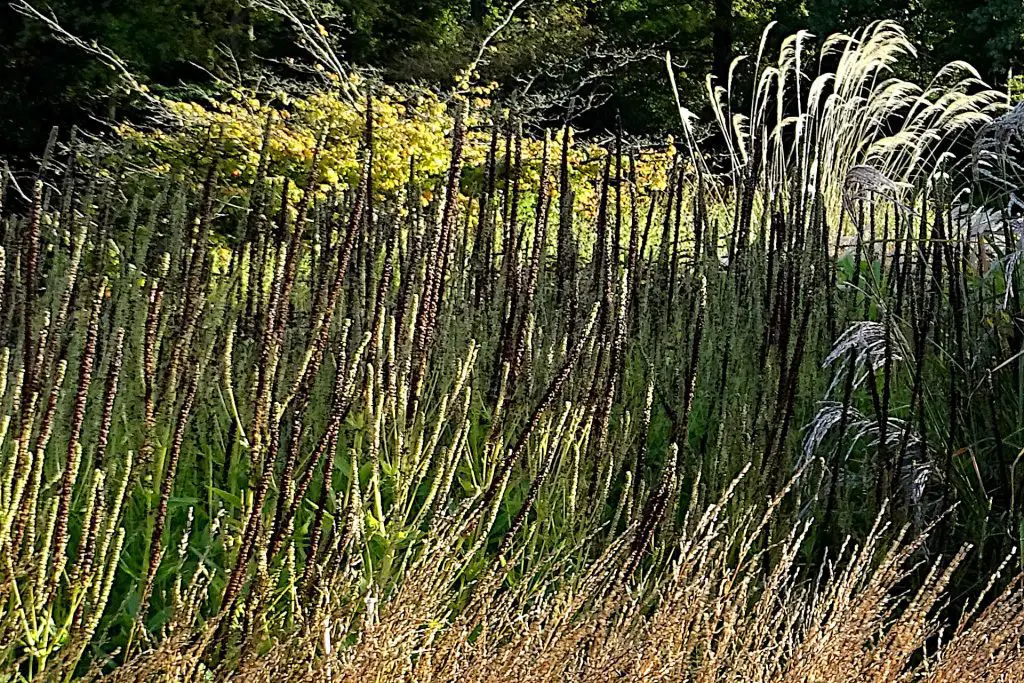
Sustainable Pruning
When considering pruning your ornamental grasses it is important to be mindful of any environmental impact and therefore employ sustainable pruning practices. Deciduous grasses, with their seasonal cycles and robust growth, offer a unique canvas where sustainability and garden maintenance intertwine, crafting a narrative that honors both the environment and the inherent beauty of the grasses.
Environmental Implications of Pruning
The act of pruning extends beyond the mere removal of foliage, intertwining with aspects of waste management, habitat preservation, and resource utilization. The discarded foliage, if not composted or utilized effectively, can contribute to waste. Moreover, cutting back grasses, especially during certain seasons, can disrupt local wildlife that may utilize them for shelter or food.
- Composting: Utilize pruned grasses as a nutrient-rich addition to your compost pile.
- Wildlife Consideration: Be mindful of the creatures that might inhabit or utilize your grasses during different seasons.
Eco-Friendly Pruning Practices
If you look to follow eco-friendly pruning practices, your deciduous grasses can continue to sway with the wind without damaging environmental well-being of your garden. From the tools you employ to the manner in which you dispose of or utilize the pruned materials, every step can be a nod toward sustainability.
Table 1: Sustainable Practices in Pruning
| Practice | Description | Benefit |
|---|---|---|
| Composting | Utilizing pruned materials in compost | Waste reduction |
| Manual Pruning Tools | Employing non-electric, manual pruning tools | Energy conservation |
| Habitat Preservation | Timing pruning to avoid disrupting nesting wildlife | Biodiversity support |
| Reusing Pruned Material | Using pruned grasses in crafts or as natural garden decor | Resource utilization |
Case Studies
If we look around the gardens of the world, where sustainable pruning practices have been woven into the very ethos of gardening. There are many real-world examples where sustainable pruning practices are not just preached but practiced with diligence and expertise.
The Royal Horticultural Society
The Royal Horticultural Society (RHS)1 provides a comprehensive guide on managing both deciduous and evergreen grasses, emphasizing the nuanced approach required for different types. The guide underscores the importance of timing when it comes to pruning, ensuring that the health and vitality of the grasses are preserved. RHS’s approach can be mirrored in our practices, ensuring that we not only maintain the aesthetic appeal of our deciduous grasses but also uphold their health and longevity through strategic pruning.
Key Takeaways:
- Timing is Crucial: Identifying the optimal time for pruning, especially for deciduous grasses, to ensure healthy regrowth.
- Type-Specific Approach: Recognizing that different grasses (deciduous and evergreen) may require varied pruning approaches.
Earth-Kind® Landscaping
Earth-Kind® Landscaping2, while focusing on deciduous and flowering shrubs, brings to light the pivotal role of proper pruning techniques and tool utilization in sustainable gardening. Their methodology, while not directly related to grasses, provides a framework that can be adapted to sustainable pruning practices for deciduous grasses. By ensuring that we utilize the correct tools and adhere to recommended pruning guidelines, we can minimize waste, reduce the impact on local fauna, and ensure the healthy regrowth of our grasses.
Key Takeaways:
- Utilizing Correct Tools: Ensuring that pruning is conducted with appropriate, sharp tools to facilitate clean cuts and minimize plant stress.
- Adaptable Techniques: While the techniques are presented for shrubs, the principles of sustainable and mindful pruning can be adapted for deciduous grasses.
Final Thoughts: Cutting Back Deciduous Grasses
In truth cutting back ornamental grasses is meticulous task but with the right knowledge to can not only can you create a beautiful aesthetically pleasing vista but, if you have large areas, do so in a sustainable way with mindful pruning practices. The gentle sway of well-pruned deciduous grasses, such as Pennisetum alopecuroides and Miscanthus sinensis, in the soft spring breeze, is not merely a visual spectacle to enjoy but a testament to diligent and informed gardening practices.
From helping you understand the nuanced needs of various grass species to balancing the delicate act of maintaining both aesthetic and plant health, we have hopefully provided you with a comprehensive guide that intertwines practicality with sustainability. The insights gleaned from real-world examples, such as the prudent approaches of the Royal Horticultural Society and the adaptable techniques from Earth-Kind® Landscaping, should serve as beacons, guiding us towards practices that not only enhance our gardens but also contribute positively to our environment.
References
- RHS Gardening ↩︎
- Texas A&M University: Earth-Kind® Landscaping ↩︎
